Description
Katyn Massacre: Timeline and Key Individuals
Detailed Timeline of the Katyn Massacre
- April-May 1940: The NKVD (Soviet secret police) carries out the mass executions of approximately 22,000 Polish military officers and intelligentsia in locations including the Katyn Forest.
- June 1990: Nataliya Lebedeva’s article, “The Tragedy of Katyn,” is published in the Russian journal International Affairs, detailing the categories and numbers of Polish victims.
- April 1943: Nazi occupation forces discover the mass graves in the Katyn Forest.
- 1943: German propaganda minister Josef Goebbels publicizes the discovery internationally, hoping to incite revulsion against the Soviet Union.
- 1943: Two US servicemen, held as POWs in Germany, are brought to Katyn by the Germans during an international news conference to publicize the atrocity.
- January 1944: The Soviet Union assembles the Burdenko Commission, chaired by a prominent surgeon, to investigate the Katyn Massacre.
- January 22, 1944: The Burdenko Commission holds an international press conference at Katyn. They present evidence claiming the Polish prisoners were murdered by the Germans in 1941. Three American journalists and Kathleen Harriman attend and initially endorse the commission’s findings after viewing the exhibits.
- 1944: Captain George Earle, President Roosevelt’s special emissary to the Balkans, compiles information on Katyn using contacts in Bulgaria and Romania. He concludes the Soviet Union was responsible.
- 1944: President Roosevelt rejects Earle’s conclusion, stating he is convinced of Nazi Germany’s responsibility. Roosevelt suppresses Earle’s report and orders him not to publish his findings, reassigning him to American Samoa for the remainder of the war.
- 1945: Colonel John H. Van Vliet, one of the US servicemen taken to Katyn in 1943, returns to Washington and writes a report concluding the Soviets were responsible for the massacre.
- Post-1945: Van Vliet gives his report to Major General Clayton Bissell, General George Marshall’s assistant chief of staff for intelligence. Bissell disregards the report, believing it was not in the US interest to embarrass an ally needed to defeat Japan.
- 1949: An American journalist forms a committee of prominent Americans, including former OSS chief General William Donovan and future Director of Central Intelligence Allen Dulles, to push for an official inquiry into the Katyn Massacre. This effort is unsuccessful.
- September 1951: The US House of Representatives appoints a select committee, chaired by Representative Ray J. Madden (popularly known as the Madden Committee), to hold hearings on the Katyn Massacre.
- 1951: Kathleen Harriman repudiates her 1944 endorsement of the Burdenko Commission’s findings before the Madden Committee.
- 1951-1952: The Madden Committee conducts an investigation, hearing 81 witnesses, examining 183 exhibits, and taking over 100 depositions. This becomes the most comprehensive US effort to gather facts and establish responsibility for the massacre to date.
- 1952: The US Army produces a report titled “Information on the Katyn Forest Incident.” A moderately redacted version is initially released.
- 1990: The office of the Prosecutors General of the Soviet Union begins an investigation into the Katyn Massacre.
- 1990: Nataliya Lebedeva’s article is published, providing detailed figures on the Polish victims based on Soviet sources.
- 1990-1991: The Soviet Union’s investigation continues.
- 1991: The office of the Prosecutors General of the Russian Federation takes over the investigation.
- 1991-2004: The Russian Federation’s investigation confirms Soviet responsibility for the Katyn Massacre but refuses to classify it as a war crime or an act of mass murder.
- 2013: A fully declassified and unredacted copy of the 1952 US Army report, “Information on the Katyn Forest Incident,” is released.
Cast of Characters
- NKVD: The People’s Commissariat for Internal Affairs of the Soviet Union. The Soviet secret police agency responsible for carrying out the Katyn Massacre.
- Nataliya Lebedeva: A Russian historian and author of the article “The Tragedy of Katyn” (1990), which provided detailed information about the victims based on Soviet sources.
- Josef Goebbels: The Reich Minister of Propaganda in Nazi Germany. He used the discovery of the Katyn graves for anti-Soviet propaganda.
- Col. John H. Van Vliet: A US Army officer and POW who was taken by the Germans to Katyn in 1943. After the war, he wrote a report concluding Soviet responsibility, which was initially disregarded.
- Maj. Gen. Clayton Bissell: General George Marshall’s assistant chief of staff for intelligence. He disregarded Col. Van Vliet’s report on Katyn, prioritizing the US alliance with the Soviet Union against Japan.
- Burdenko Commission: A commission assembled by the Soviet Union in January 1944, named after the prominent surgeon who chaired it. It concluded that the Polish prisoners were murdered by the Germans in 1941.
- Kathleen Harriman: The 25-year-old daughter of US Ambassador Averell Harriman. She attended the Burdenko Commission’s press conference in 1944 and initially endorsed their findings but later repudiated her statement in 1951.
- Capt. George Earle: President Franklin D. Roosevelt’s special emissary to the Balkans. He conducted his own investigation into the Katyn Massacre in 1944 and concluded the Soviet Union was responsible. His report was suppressed by Roosevelt.
- President Franklin D. Roosevelt: The President of the United States during World War II. He rejected Earle’s findings and suppressed his report, prioritizing the alliance with the Soviet Union.
- Gen. William Donovan: The former head of the Office of Strategic Services (OSS). In 1949, he was part of a committee that unsuccessfully pressed for an official US inquiry into the Katyn Massacre.
- Allen Dulles: A future Director of Central Intelligence. He was also part of the 1949 committee that sought an official inquiry.
- Rep. Ray J. Madden: A US Congressman who chaired the House Select Committee on the Katyn Massacre in 1951-1952. The committee became known as the Madden Committee.
- A. J. Drexel Biddle, Jr.: Likely a US diplomat or official who sent a despatch including a secret report from Polish Military Intelligence concerning the missing Polish officers.
World War II: Katyn Massacre U.S. Military Intelligence Reports
1,817 pages of U.S. military reports and related material covering the Katyn Massacre.
The Katyn Massacre was a series of mass executions of about twenty-two thousand Polish military officers and intelligentsia carried out by the Soviet Union, specifically the NKVD in April and May 1940.
According to Nataliya Lebedeva’s article, “The Tragedy of Katyn” (June 1990), from the Russian journal International Affairs, those killed at Katyn included an admiral, two generals, 24 colonels, 79 lieutenant colonels, 258 majors, 654 captains, 17 naval captains and 3,420 NCOs. Because of their social status also killed were seven chaplains, three landowners, a prince, 43 officials, 85 privates, 131 refugees, university professors, 300 physicians; several hundred lawyers, engineers, and teachers, more than 100 writers and journalists as well as about 200 non-military pilots.
When Nazi occupation forces in April 1943 found the mass graves, German propaganda minister Josef Goebbels hoped to fire-up international revulsion over the Soviet atrocity. Two US servicemen, brought from a POW camp in Germany, were at Katyn in 1943, when Berlin held an international news conference there to publicize the atrocity.
The ranking officer was Col. John H. Van Vliet, a fourth-generation West Pointer. After returning to Washington in 1945, he wrote a report concluding that the Soviets, not the Germans, were responsible. He gave the report to Maj. Gen. Clayton Bissell, Gen. George Marshall’s assistant chief of staff for intelligence who disregarded the report. Years later, Bissell defended his action before a Congressional investigation, contending that it was not in the US interest to embarrass an ally whose forces were still needed to defeat Japan.
In January 1944, Russia assembled the Burdenko Commission named after the prominent surgeon who chaired it. Predictably, it concluded that the Polish prisoners had been murdered in 1941, during the German occupation, not in 1940. To bolster its claim, the commission hosted an international press conference at Katyn on 22 January 1944. Three American journalists and Kathleen Harriman, the 25-year-old daughter of US Ambassador Averell Harriman, attended. After viewing exhibits of planted evidence, they endorsed the Burdenko Commission’s findings. Ms. Harriman later repudiated her 1944 statement before the 1951 House select committee.
In 1944, President Roosevelt assigned Capt. George Earle, his special emissary to the Balkans, to compile information on Katyn. Earle did so, using contacts in Bulgaria and Romania. He too concluded that the Soviet Union was guilty. FDR rejected Earle’s conclusion, saying that he was convinced of Nazi Germany’s responsibility. The report was suppressed. When Earle requested permission to publish his findings, the President gave him a written order to desist. Earle, who had been a Roosevelt family friend, spent the rest of the war in American Samoa.
In 1949, an American journalist assembled a committee of prominent Americans, which included former OSS chief Gen. William Donovan and future Director of Central Intelligence Allen Dulles, to press for an official inquiry, but it went nowhere.
In September 1951, the House of Representatives appointed a select committee to hold hearings. It was chaired by Rep. Ray J. Madden and was popularly known as the Madden Committee. Although not without political or propaganda overtones, the hearings were the most comprehensive effort to date by the United States to gather facts and establish responsibility. The committee heard 81 witnesses, examined 183 exhibits, and took more than 100 depositions.
An investigation conducted by the office of the Prosecutors General of the Soviet Union (1990–1991) and the Russian Federation (1991–2004) confirmed Soviet responsibility for the massacre but refused to classify this action as a war crime or as an act of mass murder.
Documents in the collection includes:
A despatch from A. J. Drexel Biddle, Jr. including a secret report from Polish Military Intelligence concerning the missing Polish Officers.
Counter Intelligence Corps and U.S. Army Intelligence and Security Command reports detailing information known by the organizations about the Katyn Massacre.
A 1952 Army Report, “Information on the Katyn Forest Incident,” in two versions, the originally release moderately redacted version, and a fully declassifed unredacted copy released in 2013.
An Army inspector general report on its handing of information about the Massacre.






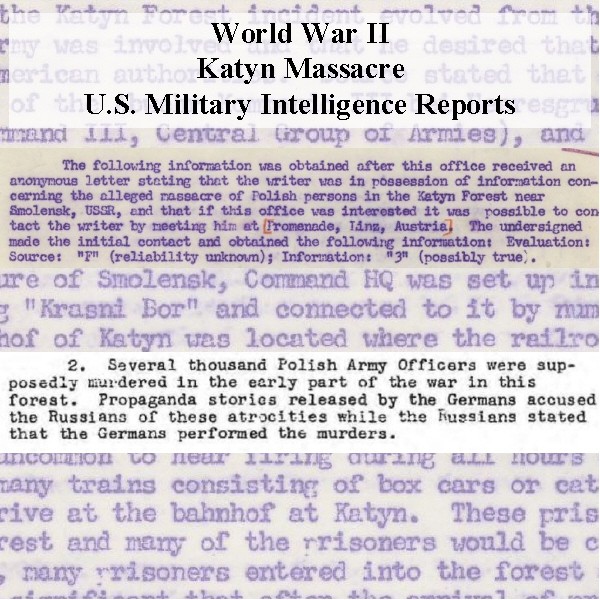
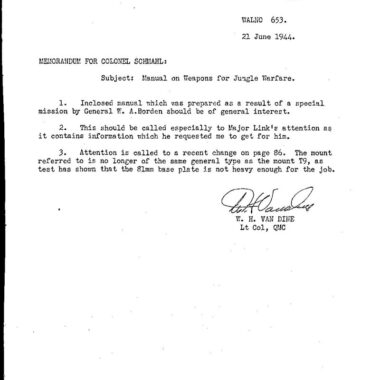
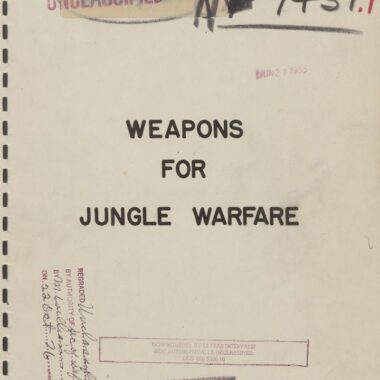
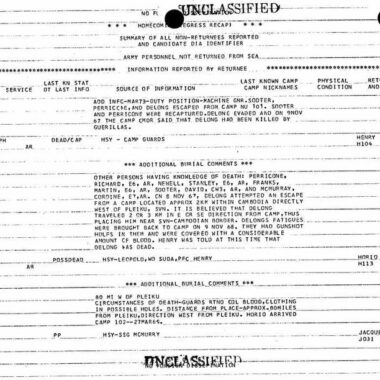
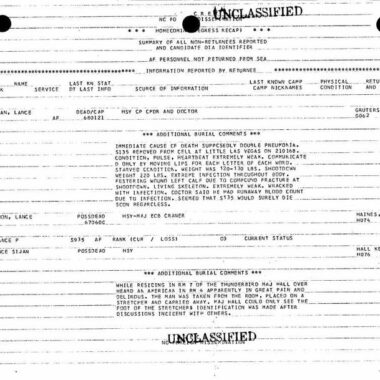

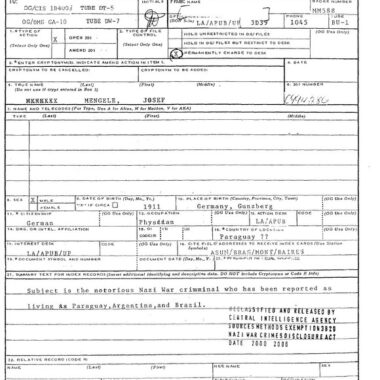
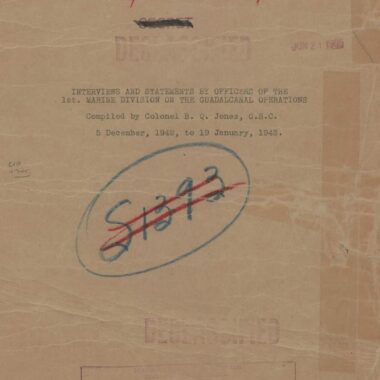
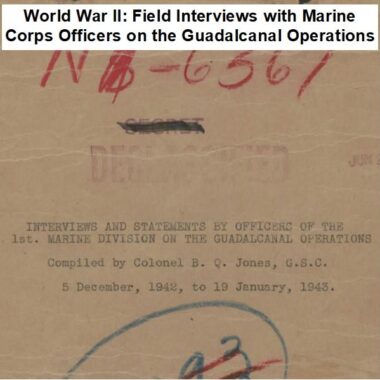
Reviews
There are no reviews yet.